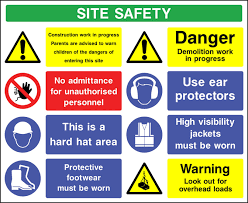
*Embarking on a journey across the open seas demands more than just navigating the waves; it requires a steadfast commitment to safety, especially within the confines of the yacht engine room. In this blog post, we explore essential strategies to instill and maintain safety habits for the daily work routine in the heart of the vessel.*
**1. Cultivate a Safety-First Culture:**
Creating a culture that prioritizes safety is the foundation for fostering good habits. Emphasize the importance of safety during crew training sessions, encouraging open communication about potential hazards and the adherence to safety protocols.
**2. Comprehensive Training Programs:**
Equip your engine room crew with thorough training programs that cover not only technical aspects but also safety procedures. Regularly update these programs to incorporate the latest safety standards and technological advancements.
**3. Routine Safety Checks:**
Implement a routine schedule for safety checks in the engine room. This includes inspecting equipment, machinery, and safety gear. Regular assessments ensure that any potential issues are identified and addressed promptly, minimizing the risk of accidents.
**4. Clear Communication Protocols:**
Establish clear communication protocols within the engine room team. Encourage crew members to communicate openly about safety concerns or observations. A well-informed team is more likely to respond effectively in emergency situations.
**5. Personal Protective Equipment (PPE):**
Make the use of Personal Protective Equipment (PPE) a non-negotiable aspect of daily work. Ensure that crew members have access to and consistently wear appropriate gear, such as gloves, safety glasses, and hearing protection, depending on the tasks at hand.
**6. Emergency Response Drills:**
Regularly conduct emergency response drills specific to engine room scenarios. Practice responses to potential hazards, fire drills, and evacuation procedures. Familiarity with these processes will empower the crew to act swiftly and confidently in real emergencies.
**7. Documented Safety Procedures:**
Maintain a comprehensive manual outlining all safety procedures relevant to the engine room. This document serves as a quick reference guide for crew members and reinforces the importance of consistent safety practices.
**8. Continuous Learning and Improvement:**
Encourage a mindset of continuous learning and improvement. Regularly review safety incidents, near misses, and lessons learned. Use these experiences as opportunities to refine safety protocols and address potential areas of improvement.
**9. Promote Physical and Mental Well-being:**
Recognize the impact of overall well-being on safety. Ensure that crew members are well-rested, mentally alert, and physically fit for duty. Fatigue and stress can compromise decision-making and reaction times.
**10. Lead by Example:**
Leadership plays a crucial role in establishing a safety-centric culture. Set the standard by consistently adhering to safety protocols and demonstrating a commitment to the well-being of the entire engine room team.
In the dynamic environment of a yacht engine room, safety is not just a practice but a way of life. By fostering a culture of vigilance, continuous learning, and clear communication, yacht engine room crews can navigate their daily responsibilities with confidence, ensuring the safety of both the vessel and its invaluable crew members.
